Where Do Possums Sleep? 6 Amazing Nesting Areas
Where do possums sleep? Possums, or opossums, are fascinating creatures with unique habits and behaviors. These marsupials are primarily nocturnal, which means they are most active during the night. During the day, possums seek out safe and sheltered places to sleep, rest, and hide from predators. Let’s take a closer look at where these elusive animals choose to sleep and how their sleeping habits contribute to their survival.
Sleeping Patterns of Possums: Nocturnal Wanderers
Possums are fascinating creatures not just because of where they sleep, but also because of their unique sleeping patterns. As nocturnal animals, possums are primarily active during the night and spend most of their days sleeping or resting. Understanding their sleeping patterns provides insight into their behavior and survival strategies.
- Nocturnal Behavior: Possums are well-adapted to a nocturnal lifestyle. They have keen senses, including excellent night vision and a strong sense of smell, which allow them to navigate and forage in the darkness. As the sun sets and night falls, possums become active, venturing out in search of food, water, and potential mates.
- Daytime Retreats: With the rising sun, possums seek refuge in safe and concealed areas to rest during the day. They are secretive animals, avoiding direct contact with potential predators and humans alike. The locations where they sleep during the day are chosen to provide shelter, security, and protection.
- Sleeping Duration: Possums typically spend around two-thirds of their time resting or sleeping. They are not continuous sleepers like humans; instead, they experience multiple periods of slumber throughout the day and night. These sleep cycles help conserve energy and allow them to be active during the most favorable times, when their prey is abundant and their natural predators are less active.
- Seasonal Variations: Possums’ sleeping patterns can vary based on the seasons and environmental factors. During colder months or adverse weather conditions, they may sleep for longer periods to conserve energy and avoid harsh elements. In contrast, during warmer months and when resources are abundant, their sleep patterns may be more flexible.
- Thermoregulation: Possums are endothermic animals, meaning they can regulate their body temperature internally. They adapt to temperature changes by seeking out appropriate sleeping spots. During colder nights, they may choose warmer and sheltered locations to sleep, while on hotter nights, they may opt for cooler and more ventilated spots.
Understanding the sleeping patterns of possums helps us appreciate their adaptability and survival strategies. As beneficial scavengers, possums play a vital role in ecosystems by consuming insects, carrion, and even ticks, helping to control pest populations and reduce the spread of diseases.
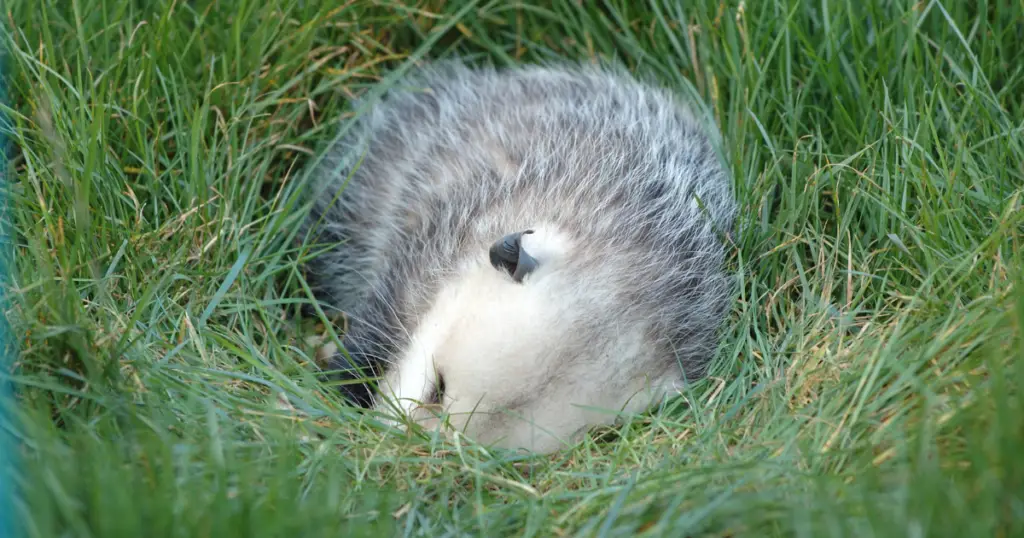
Where Do Possums Sleep? A Look into Their Nocturnal Habits
Possums, or opossums, are fascinating creatures with unique habits and behaviors. These marsupials are primarily nocturnal, which means they are most active during the night. During the day, possums seek out safe and sheltered places to sleep, rest, and hide from predators.
Let’s take a closer look at where do possums sleep and how does their sleeping habits contribute to their survival.
1. Tree Hollows – Nature’s Ready-Made Beds
In their natural habitats, possums prefer to sleep in tree hollows. These hollows serve as natural shelters and provide protection from predators and the elements. Tree hollows are created by various processes, such as decay, fire, or the activities of other animals. Possums find these cozy spaces ideal for their daytime slumber. They can easily climb up trees to access these tree hollows, which are essential for their survival in the wild.
- A Safe Haven in the Treetops: The tops of trees may seem like distant realms to some, but for possums, they are familiar and treasured havens. The high vantage point of tree hollows offers a strategic advantage, as it allows possums to keep a watchful eye on their surroundings and spot potential threats from afar. This elevated perspective, combined with their excellent night vision, enables them to remain vigilant even during their daytime rest.
- Nature’s Architectural Masterpieces: Tree hollows are the work of nature’s hand, sculpted over time through various processes. Decay and weathering, often assisted by the activities of woodpeckers or other animals, create the perfect hollows for possums to call home during the day. These natural cavities vary in size and shape, accommodating possums of different ages and sizes.
- Protection from Predators: The tree hollow’s elevated location serves as a fortress of sorts, providing possums with a safe retreat from terrestrial predators that cannot reach them in the treetops. Ground-dwelling predators such as foxes, raccoons, and feral cats are less likely to venture into the heights of the trees, reducing the risk of encountering possums during their slumber.
2. Brush Piles and Natural Debris
In the heart of forested and wooded landscapes, possums have perfected the art of finding comfort in the most unassuming places. Among the tangle of fallen branches, leaves, and natural debris, they discover a treasure trove of perfect hiding spots for their daytime slumber. Brush piles, fallen logs, and scattered foliage become the possum’s retreat, providing excellent camouflage and ensuring they remain undetected during daylight hours.
- Mimicking Their Environment: The forest floor is a rich tapestry of textures and colors, and possums take advantage of this natural diversity to conceal themselves during their rest periods. Brush piles, formed from fallen branches and leaves, create a maze of hiding spots where possums can tuck themselves away, mirroring the organic complexity of their forest surroundings.
- Clever Camouflage: Possums’ fur blends remarkably well with the earthy tones of the forest floor, further enhancing their ability to blend in. Their coat, often colored in various shades of gray and brown, acts as natural camouflage, allowing them to seamlessly merge with the surrounding foliage and debris. This camouflage contributes to keeping them safe from potential predators that may roam the forest during the day.
- Safe and Secure Nooks: Within brush piles and natural debris, possums find a sense of security that mimics the coziness of their tree hollows or dens. The fallen logs and accumulated foliage create secluded nooks and crannies where possums can curl up and rest, protected from the prying eyes of predators and other forest inhabitants.
- Strategic Habitat Selection: The choice of brush piles and natural debris as resting spots is strategic for possums. These areas are often scattered throughout their territories, ensuring that they have multiple hiding spots available for daytime refuge wherever they venture within their wooded habitats. The abundance of such spots allows possums to adjust their resting places to suit the conditions of their environment.
- Ecosystem Benefits: Brush piles and natural debris play a significant role in forest ecosystems beyond providing hiding spots for possums. They act as microhabitats for a range of small animals, insects, and fungi, contributing to the overall biodiversity and ecological health of the forest. By utilizing these natural features, possums contribute to the delicate balance of their woodland homes.
3. Under Porches and Decks
Possums are remarkably adaptable creatures, and as human settlements expand into their natural habitats, they have found ingenious ways to coexist with humans. One of their favored daytime resting spots in urban and suburban areas is the space beneath porches or decks. These concealed and shadowy retreats provide possums with a sense of safety and security amidst the human-dominated landscape.
- Urban Oasis: As urbanization encroaches on natural habitats, possums have learned to utilize the available structures in human environments to their advantage. The space beneath porches and decks offers possums an urban oasis, where they can retreat and find refuge away from the hustle and bustle of human activities.
- Convenient Concealment: The low-clearance space under porches and decks serves as a naturally concealed nook for possums to rest during the day. The shadowy environment mimics the darkness they prefer for daytime slumber, allowing them to remain unseen and undisturbed by passing humans.
- Protection from Predators: The space beneath porches and decks acts as a protective barrier, guarding possums from potential threats like dogs, cats, or other nocturnal predators. By choosing these secluded spots, possums can minimize their exposure to dangers and ensure their safety while they sleep.
- Encouraging Wildlife-Friendly Spaces: Providing possums with suitable hiding spots like the space beneath porches and decks contributes to creating wildlife-friendly environments in urban and suburban settings. By allowing possums to find shelter and safety in these secluded spots, we can foster a harmonious coexistence between humans and these fascinating nocturnal wanderers.
4. Dense Vegetation
Possums are masters of blending into their surroundings, and one of their preferred resting spots during the day is within dense vegetation, such as bushes or thick shrubs. These lush and leafy hideouts offer possums ample cover and protection from potential predators, allowing them to remain elusive and undisturbed during their daytime slumber.
- Natural Camouflage: The dense vegetation provides a natural camouflage for possums, helping them stay concealed from the prying eyes of predators and humans alike. Their fur coloration, which often includes shades of gray, brown, and white, seamlessly blends with the foliage, making them nearly invisible when nestled among the leaves and branches of dense vegetation.
- Protection from Predators: Dense vegetation acts as a fortress of safety for possums during daylight hours. The tangled branches and thick foliage create a barrier that keeps predators, such as birds of prey or terrestrial carnivores, from spotting and reaching them easily. By seeking shelter in these green hideouts, possums minimize their exposure to potential dangers, reducing their risk of predation.
- Climate Regulation: Besides offering protection from predators, the dense vegetation also helps regulate the possums’ body temperature. During colder periods, the shrubbery provides a shield against chilly winds and retains heat, keeping the possums warm and comfortable. Conversely, on scorching days, the shade provided by the vegetation keeps the possums cool and prevents overheating.
- Respecting Natural Refuge: Encountering possums nestled within dense vegetation can be an enchanting sight, but it is essential to respect their need for undisturbed rest and security. Approaching too closely or making sudden movements may startle the possums, causing them unnecessary stress. Providing a quiet and peaceful environment ensures that these elusive marsupials feel safe in their natural hideouts.
5. Abandoned Burrows
Possums are resourceful creatures, and when it comes to finding suitable shelter, they make the most of what nature provides. While they don’t possess the ability to dig their own burrows like some other animals, they are quick to seize opportunities presented by abandoned burrows created by other creatures, such as groundhogs or armadillos. These vacated underground chambers offer possums additional protection and refuge during the day.
- The Art of Opportunism: Possums are opportunistic by nature, and this behavior extends to their choice of shelters. When they encounter abandoned burrows in their territories or during their nocturnal foraging excursions, they assess these pre-existing structures for their suitability. If the burrow meets their requirements for safety, space, and accessibility, possums readily move in, making adaptations as needed to suit their needs.
- Safety and Protection: Abandoned burrows offer possums a level of protection that is hard to come by in the open. These subterranean chambers shield possums from inclement weather, predators, and disturbances during daylight hours when they seek rest. By utilizing abandoned burrows, possums can minimize their exposure to potential threats and conserve energy for their nightly activities.
- Burrow Adaptations: While possums don’t create burrows themselves, they may make adjustments to the burrow’s interior to make it more comfortable and suitable for their needs. This might include lining the burrow with leaves, grass, or other soft materials to create a cozy nesting area. Their resourcefulness allows them to transform these spaces into temporary homes that fulfill their essential requirements.
- Communal Use and Sharing: In some instances, multiple possums may use the same abandoned burrow, especially during harsh weather conditions or when suitable shelter options are limited. The communal use of these burrows demonstrates their adaptability to living in close proximity to one another and cooperating to survive challenging circumstances.
6. Temporary Nests for Nursing Mothers
Female possums are devoted mothers, and when they are nursing their young, they go to great lengths to create a safe and nurturing environment for their offspring. During this critical period, they construct temporary nests, known as dreys, which serve as cozy and protective shelters for their vulnerable babies.
- Drey Construction and Location: Building these temporary nests is a meticulous process. The resourceful mother possum uses various materials like leaves, twigs, grass, and even fur to construct the drey. She weaves these materials together to form a sturdy and snug structure. Dreys are typically located in elevated positions, such as tree branches, shrubs, or in the crooks of tree trunks. By choosing elevated locations, the mother possum can keep her babies safe from ground-dwelling predators and disturbances.
- The Maternal Instinct: The creation of dreys is an instinctive behavior in female possums. They prioritize their offspring’s safety and well-being, ensuring that they have a comfortable and secure place to rest and grow during their early stages of life. The drey provides a sense of warmth and protection, allowing the young possums to develop and thrive under their mother’s watchful care.
- Mobility and Adaptability: One intriguing aspect of dreys is that they are not permanent structures. Once the nursing period ends, mother possums will move their young to different locations, dismantling the drey in the process. This mobility allows them to adapt to changing environmental conditions and potential threats, ensuring the survival of their offspring.
- Dreys and Human Interaction: As temporary nesting structures, dreys might occasionally be spotted in residential areas, especially if there are possums living nearby. While encountering a drey may be an exciting sight, it is essential to maintain a respectful distance and avoid disturbing the possum family. Disturbing the drey could cause unnecessary stress to the mother and her young, potentially leading to abandonment or displacement.
- A Time of Nurturing and Growth: The period when nursing mothers care for their young in dreys is a time of tender nurturing and critical growth for the baby possums. As the young possums continue to develop and mature, they will eventually venture out of the drey and begin to explore their surroundings, under the watchful eyes of their mother.
Understanding the significance of dreys in the lives of nursing possums deepens our appreciation for the maternal instincts and resilience of these remarkable marsupials. By providing them with safe and undisturbed spaces to raise their young, we can contribute to the successful upbringing of the next generation of possums, ensuring the continuation of their unique species.

Do Possums Sleep Hanging Upside Down In Trees?
Yes, possums are known to sleep hanging from trees. Their ability to sleep while suspended upside down is one of their unique adaptations. This behavior is possible because of their prehensile tail and opposable thumbs, which provide them with exceptional climbing skills.
When possums find a suitable tree hollow or crevice, they may curl up inside or perch themselves on a branch, using their strong tail to grip onto the tree limb securely. By hanging from trees, possums can rest in a safe and elevated position, away from potential ground-based predators and disturbances.
The ability to sleep hanging from trees is not limited to just nighttime rest. Possums may also take short naps while hanging during the day, especially if they are nursing mothers caring for their young. This behavior is a remarkable adaptation that showcases their arboreal lifestyle and enhances their survival in their natural habitats.
Conclusion (Where Do Possums Sleep)
So, now we know the common places where possums sleep. Understanding the sleeping patterns and preferred sleeping locations of possums provides a fascinating glimpse into the lives of these nocturnal wanderers. Possums’ adaptability to various environments, from natural habitats to urban settings, showcases their resilience as a species.
As beneficial scavengers, possums play an essential role in ecosystems by helping to control insect populations and reducing the spread of diseases. Their diverse diet and unique defense mechanisms, such as “playing possum,” add to their intriguing nature and the ways they have evolved to survive and thrive.
If you encounter possums on your property, remember that they are generally harmless creatures and pose little threat to humans. Taking simple steps to peacefully coexist, such as removing potential food sources and shelter spots from living areas, can encourage these fascinating marsupials to seek their natural habitats.
As we continue to learn more about possums and appreciate their ecological contributions, we can develop a deeper respect for these elusive creatures and their role in maintaining balanced ecosystems.


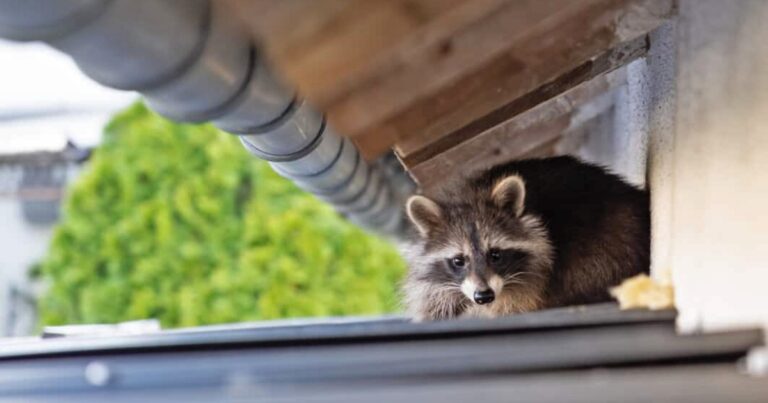
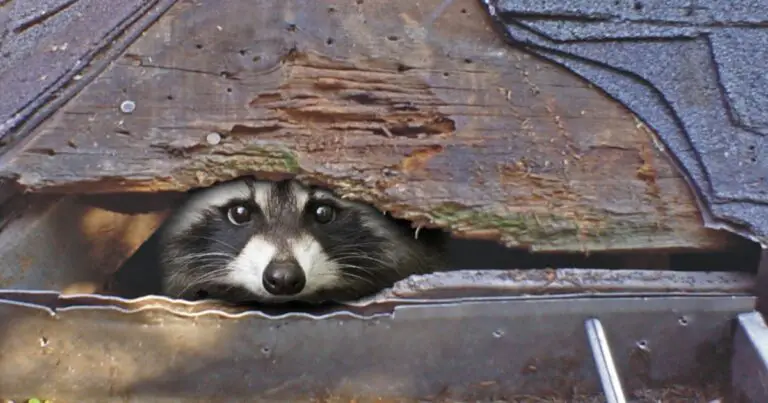
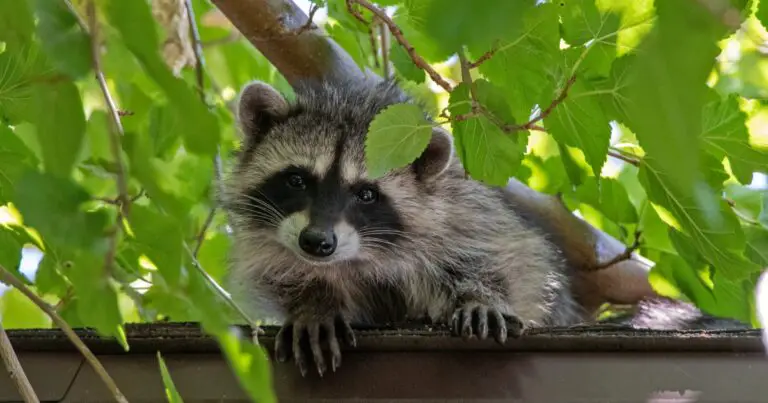
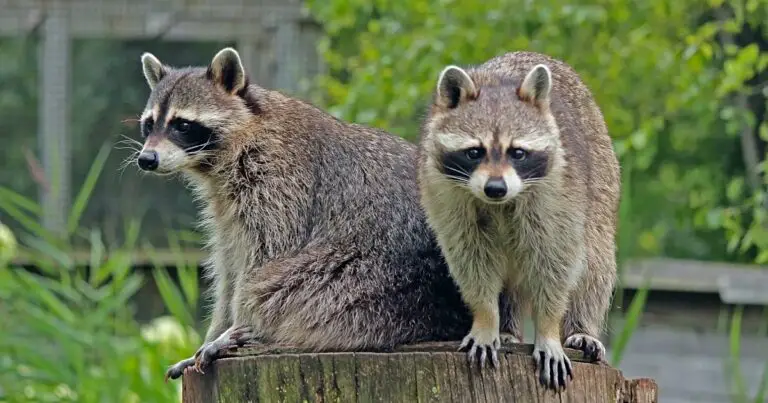

One Comment